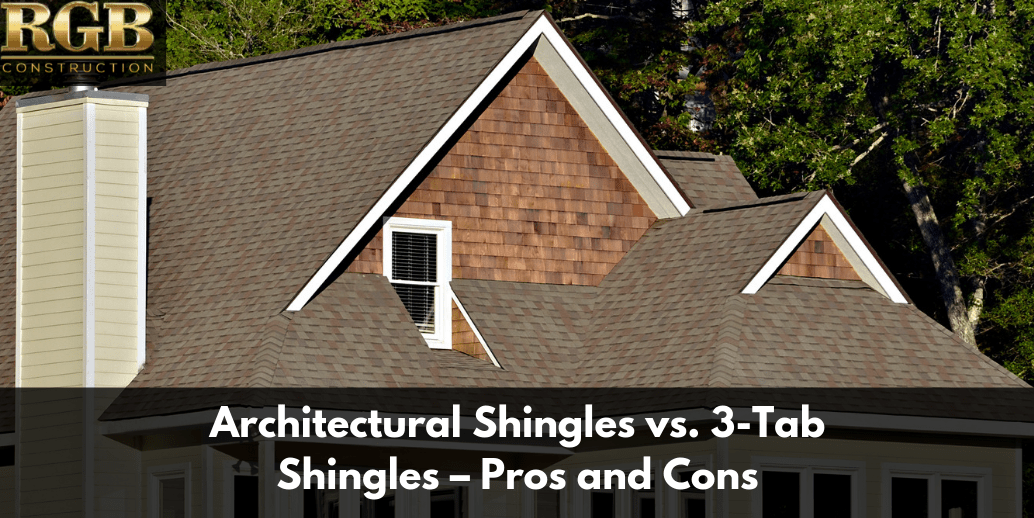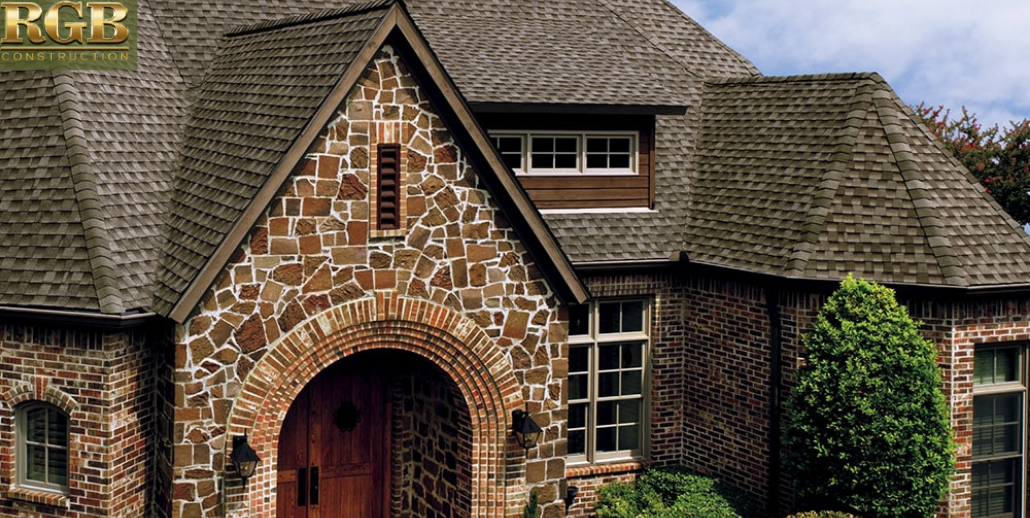Updated: March 2025
A Complete Guide for South Jersey Homeowners
Introduction: Choosing the Right Shingles for Your Roof
Your roof is one of the most critical parts of your home, and selecting the right shingles can impact its durability, curb appeal, and energy efficiency. When homeowners in South Jersey consider a roof replacement, they often face a key decision: architectural shingles or 3-tab shingles?
At RGB Construction, a GAF Master Elite Contractor serving Cherry Hill, Gloucester County, and surrounding areas, we frequently guide homeowners through this choice. This article will compare the two shingle types, providing expert insights to help you make an informed decision.
Real South Jersey Homeowner Experience
A homeowner in Cherry Hill, NJ, had storm-damaged 3-tab shingles that repeatedly needed repairs. Frustrated with the frequent maintenance, they contacted RGB Construction for a long-term solution. Our team recommended upgrading to GAF Timberline® HDZ™ architectural shingles. The result? A roof that can withstand winds up to 130 mph, provides better insulation, and enhances the home’s curb appeal.
If you’re facing a similar decision, this guide will help you understand which shingles are best for your home.
What Are Architectural Shingles?
Also known as dimensional shingles or laminate shingles, architectural shingles consist of multiple layers of asphalt, creating a thicker, more textured appearance. They are designed to mimic wood shakes or slate, giving the roof a premium look.
Key Benefits
- Durability: Withstands winds up to 130 mph—ideal for New Jersey storms.
- Longer Lifespan: Typically lasts 25 to 50 years, depending on brand and maintenance.
- Aesthetic Appeal: Adds depth and dimension to your roof.
- Stronger Warranty: Many brands, including GAF, offer limited lifetime warranties.
Potential Drawbacks
- Higher Upfront Cost: Architectural shingles cost 20-30% more than 3-tab shingles.
- Heavier Material: Requires stronger roof decking for proper support.
Best For:
- Homeowners looking for long-term durability and curb appeal.
- Homes in high-wind areas like South Jersey.
What Are 3-Tab Shingles?
3-tab shingles are a traditional, budget-friendly roofing material known for their flat, uniform appearance. Unlike architectural shingles, they feature a single layer of asphalt, making them lightweight and easy to install.
Key Benefits
- Affordable: One of the least expensive roofing options.
- Lightweight: Ideal for homes that cannot support heavier shingles.
- Faster Installation: Requires less labor, lowering total roofing costs.
Potential Drawbacks
- Shorter Lifespan: Typically lasts 15 to 25 years, shorter than architectural shingles.
- Less Durable: More vulnerable to wind damage and storms.
- Limited Aesthetic Appeal: Lacks the dimensional look of architectural shingles.
Best For:
- Homeowners on a tight budget.
- Rental properties or lower-cost home renovations.
Architectural vs. 3-Tab Shingles: A Side-by-Side Comparison
| Feature | Architectural Shingles | 3-Tab Shingles |
|---|---|---|
| Lifespan | 25-50 years | 15-25 years |
| Wind Resistance | Up to 130 mph | Up to 60 mph |
| Aesthetic Appeal | High-end, dimensional | Flat, uniform look |
| Cost | Higher upfront cost | Budget-friendly |
| Warranty | Often limited lifetime | 20-30 years |
How Shingle Color & Material Impact Roof Performance
Shingle Color & Energy Efficiency
- Lighter shingles reflect sunlight, keeping homes cooler in summer.
- Darker shingles absorb heat, which may be better for winter insulation.
- GAF offers UV-resistant shingles to prevent fading.
Impact of Layers on Durability
- Architectural shingles have more layers, making them thicker and stronger.
- 3-tab shingles are thinner and more prone to curling over time.
Which Shingles Are Best for South Jersey Homes?
In Gloucester County, Camden County, and South Jersey, roofs must withstand strong winds, humidity, and seasonal storms. Based on durability and longevity, architectural shingles are the superior choice for this region.
RGB Construction Case Study
A homeowner in Washington Township, NJ, had 3-tab shingles that failed after only 18 years due to wind damage. RGB Construction upgraded them to GAF Timberline HDZ architectural shingles, giving their home enhanced storm resistance and a limited lifetime warranty.
If you’re looking for a long-term roofing solution, architectural shingles provide better protection in New Jersey’s unpredictable weather.
Frequently Asked Questions
-
1. Are architectural shingles worth the extra cost?
- Yes. They last twice as long, provide better wind resistance, and offer enhanced curb appeal.
-
2. Can I install architectural shingles over existing 3-tab shingles?
- It depends on your roof’s structural integrity. RGB Construction offers free inspections to determine feasibility.
-
3. How long do architectural shingles last?
- Typically 25 to 50 years, depending on quality and maintenance.
-
4. Do 3-tab shingles still come with warranties?
- Yes. Most manufacturers offer 20-30 year warranties, though architectural shingles often have lifetime warranties.
-
5. Can I switch from 3-tab shingles to architectural shingles?
- Yes, but it’s best done during a full roof replacement. RGB Construction can assess whether your roof deck needs reinforcement.
Conclusion
When considering roofing options in Gloucester County, New Jersey, it’s essential to weigh the pros and cons of architectural shingles and 3-tab shingles. Both types offer unique benefits and considerations. Architectural shingles provide enhanced aesthetics and durability but come at a higher cost. On the other hand, 3-tab shingles offer cost-effectiveness but have a simpler appearance and shorter lifespan. Consult with a reputable roofing company like RGB Construction to determine the best shingle type for your specific needs and budget.
Why Choose RGB Construction?
- GAF Master Elite Contractor – Only 2% of contractors earn this status.
- ver 20 years of roofing expertise in South Jersey.
- Premium GAF Timberline HDZ installations with advanced wind protection.
- Flexible financing options are available.
Schedule a Free Roofing Consultation Today
Choosing the right shingles is an important decision. Let the experts at RGB Construction help you find the best roofing solution for your home.











